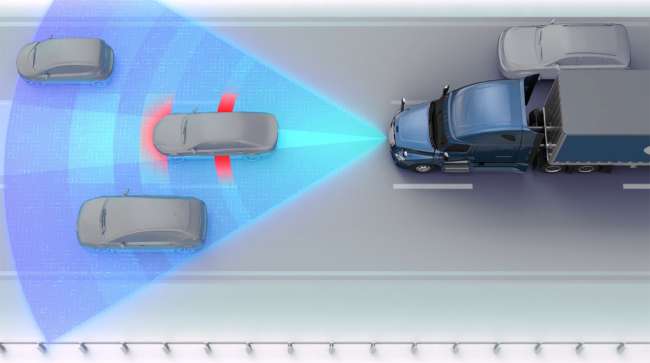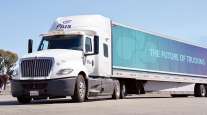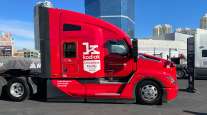Senior Reporter
Roundtable Participants Promote Use of Advanced Driver Assistance Systems

Despite a relatively slow adoption rate of advanced driver assistance systems, or ADAS, by small and medium-sized motor carriers, a roundtable of trucking, manufacturing, research and regulatory executives say the technologies generally are showing real results in reducing the number and severity of crashes.
Nearly all of the roundtable members touted the benefits of technologies such automatic emergency braking, but wished that more in the industry were paying attention to the new, improved systems. Those who have seen benefits from them are concerned about the challenge of spreading the word to those who shied away from the technologies after hearing stories of kinks during earlier stages of development.
“While the number is going up, it’s still not where we’d like it to be,” said Michael LaPonte, an NTSB highway vehicle crash investigator. “A lot of carriers don’t see the return on investment. Is that short-sighted? Absolutely.”
The same reluctance can be seen with some truck drivers, who fear the technologies will interfere with their driving skills, the executives said.
“At first they say, ‘If you put that technology in my truck, I’m out of here,’ ” said Gary Johnson, director of risk compliance for Lytx DriveCam. “What you hear two or three years after the technology is used throughout the fleet is, ‘If you take that technology out of my truck, I’m out of here.’ ”
The event, which lasted more than four hours and was streamed live online July 24 from Schaumburg, Ill., centered mostly on state and industry acceptance of ADAS, and driver training and acceptance of forward collision avoidance technologies.
Robert Kreeb, division chief of intelligent technology research for the National Highway Traffic Safety Administration, said the agency’s on-road testing of ADAS, is now in its second phase.
“We’re continuing to study it,” Kreeb said. “The results so far are encouraging.”
Thomas DiSalvi, vice president of safety and loss prevention for Schneider, said the truckload and intermodal carrier has 12,000 trucks with automatic emergency braking systems in place.
“We have seen a 69% reduction in crash frequency and a 95% reduction in severity,” DiSalvi said. “The system is highly efficient, and there should be no doubt that this is ready for prime time.”
Tim Lafon, vice president of regulatory affairs for Volvo Trucks North America, said the truck maker earlier this month announced that the company’s Active Driver Assist is now standard equipment on the new Volvo VNR and VNL series tractors. The system features an industry-first heads up windshield display if a driver approaches too closely to an object in front. If the driver does not hit the brakes, the system automatically kicks in to slow the rig, the company said.
Lafon said customers that have purchased ADAS packages say the systems are “making a difference.”
Daimler Trucks North America developed its own proprietary system internally to have a more comprehensive integrated system, said Ritchie Huang, manager of engineering and safety for the OEM.
“We introduced our first system, Detroit Assurance, in 2015,” Huang said. “We introduced the newest version in January 2017, 4.0. What we’re seeing is a 66% take rate. It’s a growth we’re seeing that’s probably going to continue.”
Adam Gregori, CEO of Sentinel Transportation, said the cost of investment for ADAS systems over the past 10 years has declined to 7-cents from 21-cents per $100 of revenue.
“The technology works, the return on investment is there, and the only thing that’s holding companies back from doing it is some understanding of that risk and cost,” Gregori said. “But just as important is the safety culture within those companies. I think both of those need to be looked at.”
“There’s a lot of very enlightened people in this room and in the audience,” said roundtable moderator Alex Epstein, National Safety Council’s senior director of digital strategy. “But there are lots and lots of operators and vehicles on the road that are not sold yet.
“This is not just high levels of automation. This is something to help you get home to your family,” he added.




